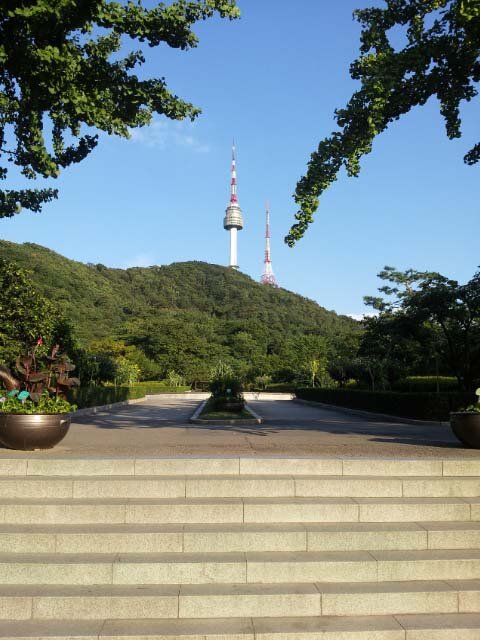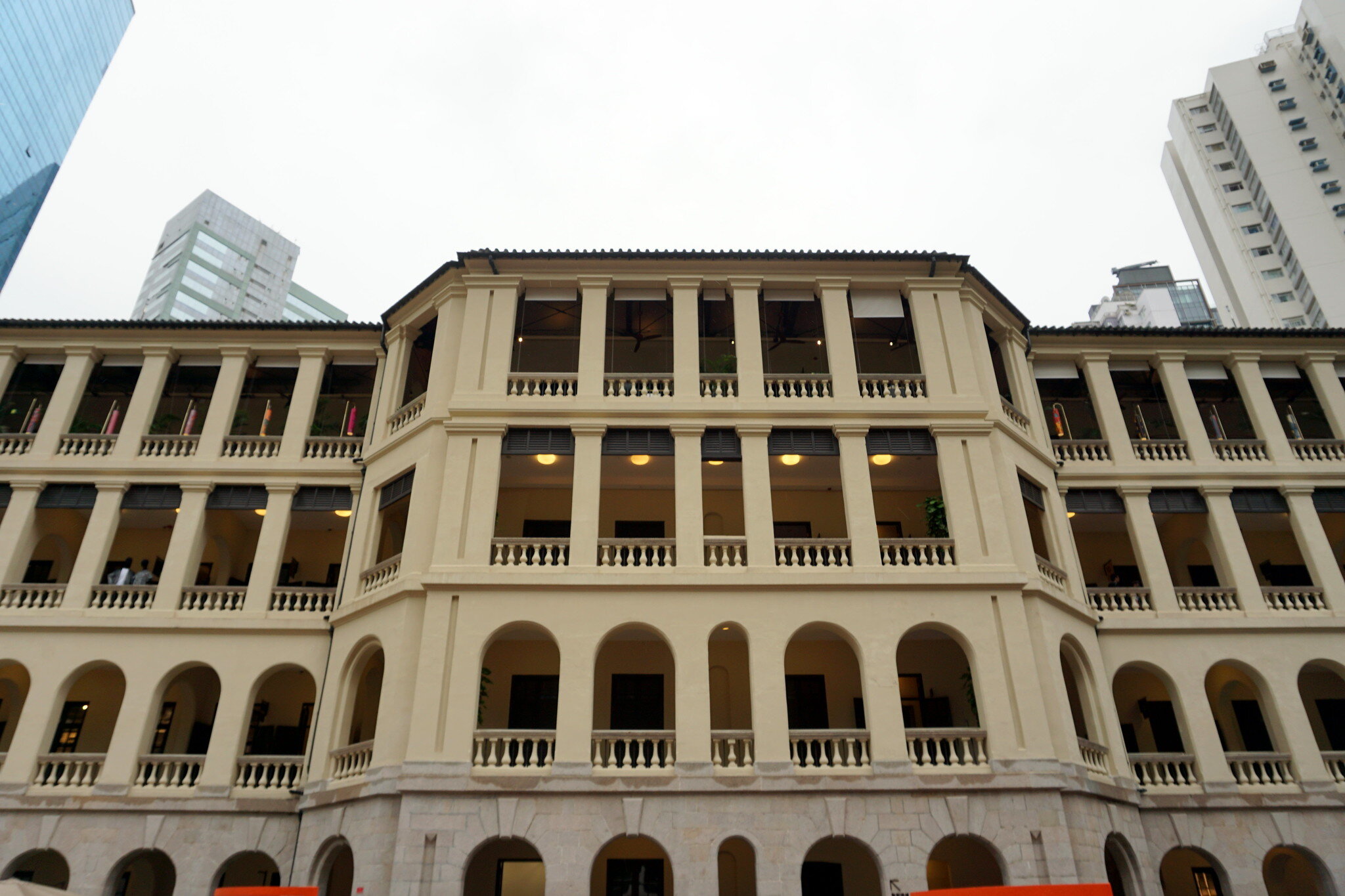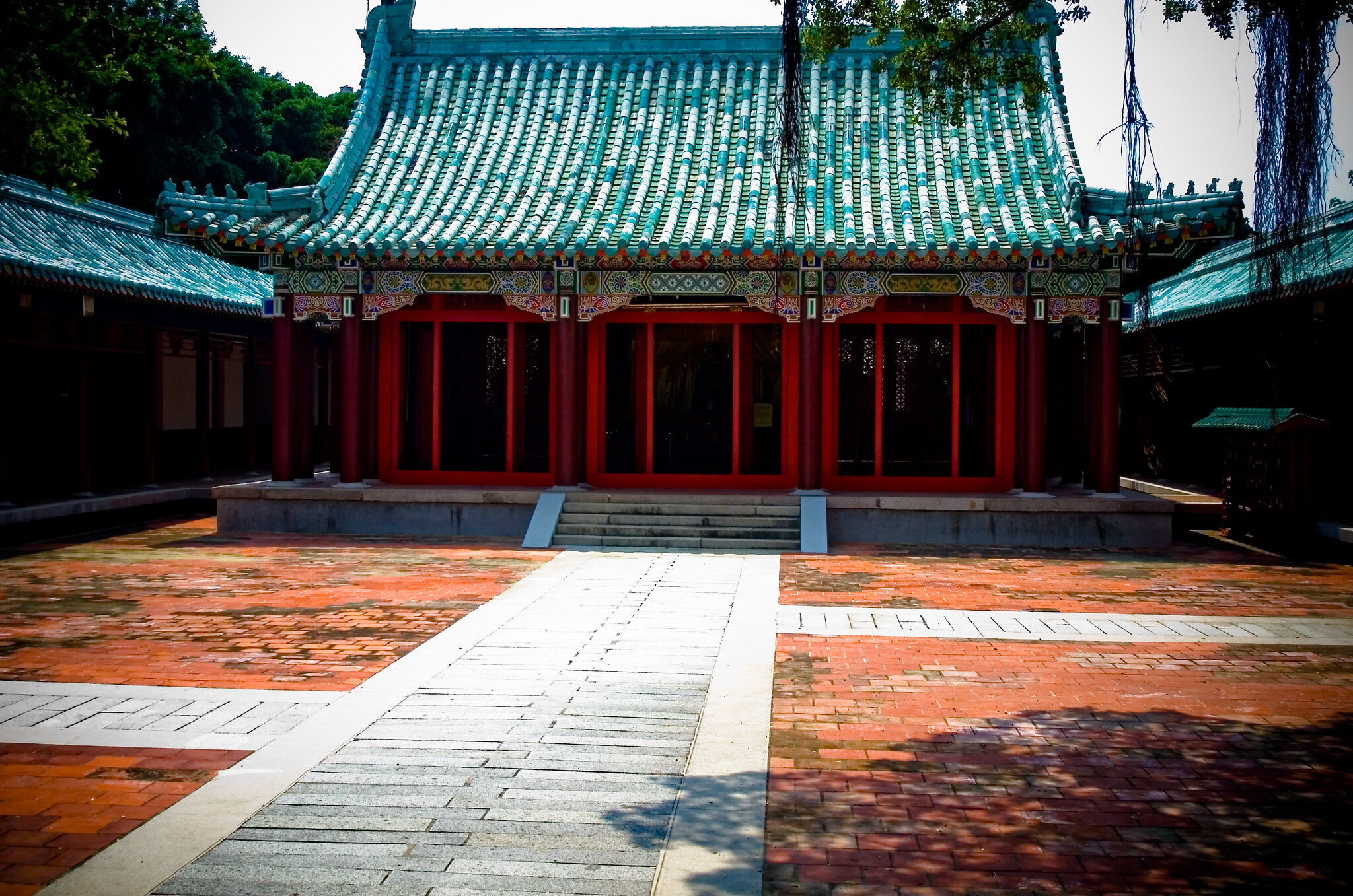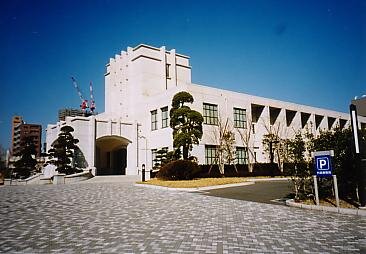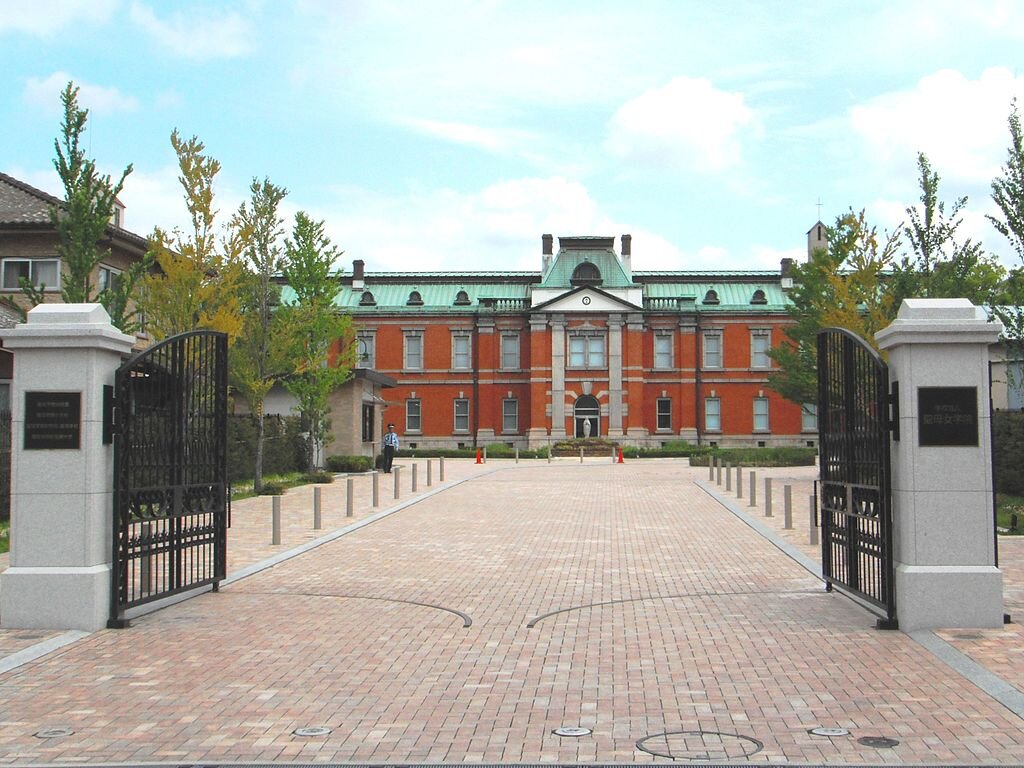Touring Shinto Shrines in Seoul
Emergence of Contestation: 2017
The "dark history" tour along a route on South Mountain in central Seoul aims to showcase the disgraceful history of Japanese colonial rule over Korea and the associated hardships by placing the remains of the Shinto Shrines located along the route in their historical context. Few of the Shrines have been re-purposed as sites of memorialisation, most remain unmarked (aside from in the tour guide materials), and reflect a disconnect in the awareness of Seoul's inhabitants between the spaces in the city they live in and their history.
The Memory and Legacy of shinto Shrine Sites in Seoul: The Geography of Colonial Religious Topoi - John G. Grisafi
Tanba Mangan Kinenkan
Emergence of Contestation: 1989
The Tanba Mangan Kinenkan is a small private museum near Kyoto which houses information on the conscription of Korean labourers in the early twentieth century
Museum Education through Reenactment: Considering Historical Sites in Korea and Japan - Jason Mark Alexander
Taiwan Jingu
Emergence of Contestation: 1901
Taiwan's general protector shrine, Taiwan Jinja, was established six years after Taiwan came under Japanese control. The three Pioneer Kami were enshrined in the first seat of the shrine, while a second seat enshrined Prince Kitashirakawa-no-miya Yoshihisa, who had died in Tainan in 1895 of malaria, after leading a successful pacification campaign against the remaining Qing loyalists in Taiwan. Like others in Taiwan, the shrine itself was handed over to the Republic of China after 1945, but remained largely unaltered until the 1970s. Then, as part of a broader policy of removing the traces of Japanese colonization and fostering patriotism, the shrine was razed and replaced with the towering Taipei Grand Hotel in 1973, which showcased northern Chinese (as opposed to southern Chinese or Taiwanese) architecture.
Desecration or Veneration: The Legacy of Shinto Shrines at the Borders of Imperial Japan - Karli Shimizu
Tai Kwun Centre for Heritage and Arts, Hong Kong
Emergence of Contestation: 2018
Tai Kwun police station was redeveloped and opened to the public in 2018, and comprises three former surveillance apparati: the central police station, the central magistracy and Victoria Prison. At first, in the courtyard of the beautifully renovated compound, one sees mostly the American bars and French restaurants, with spaces for shops selling all kinds of crafts and design materials, and, in the upper part of the complex, a gallery for contemporary art. In the buildings, there are a number of signposted notices pertaining to the history of place, as well as a visitor centre that guides you into the overall history of the buildings. History is thus here not hidden but clearly labelled, but judgement on its status remains cautious.
Art in Former Military Sites: Spectres of Geopolitics in Southeast Asia - Gabriel Gee
Shrine of Valor
Members of the 16th Division of the Imperial Japanese Army stationed in Kyoto were sent out across the Asia-Pacific, linking various sites across the city to Japan's military past. This past and the associated sites, however, are conspicuously absent from
The Politics of Pacific War Memorialization in Thailand's Victory Monument and Philippines' Shrine of Valor - John Lee Candelaria
Victory Monument
Thailand's Victory Monument approaches memorialisation of Thai war heroes in an outwardly subdued way, apparently criticising the state's past actions through ambiguity and restraint.
The Politics of Pacific War Memorialization in Thailand's Victory Monument and Philippines' Shrine of Valor - John Lee Candelaria
Qijin Kitchen, Kaohsiung
Qijin kitchen is a project developed by the Taiwanese artist Wu Mali in Kaohsiung, the main harbour city in the south of Taiwan. The kitchen is located on Qijin island, a thin band of land that separates the inner bay of Kaohsiung from the ocean. The history of Kaohsiung harbour is tied to the island’s position at the top of the Southern China seas. Qijin island has been for many centuries populated by fishermen, and today is made to stand for a ‘vernacular Taiwan’, a glimpse into the pre-industrialized world. This is a false impression, as the population, in the past as today, is made up of migrants sailing the waves of history, and consuming foodstuffs from well beyond Taiwan's current borders.
Art in Former Military Sites: Spectres of Geopolitics in Southeast Asia - Gabriel Gee
National Memorial Museum
Emergence of Contestation: 2014
The National Memorial Museum of Korea in Pusan focuses on the Japanese conscription of Korean labourers during the period of colonial expansion, focussing particularly on the lived experiences of the colonized.
Museum Education through Reenactment: Considering Historical Sites in Korea and Japan - Jason Mark Alexander
https://www.flickr.com/photos/kiyong2/49037497296/
Memorial Tours to Palau
Emergence of Contestation: 1968
In 1968, Hiroshi Funasaka (舩坂弘1920-2006), who survived the Battle of Angaur, organised one of the earliest non-governmental tours to Palau to hold memorial services and build war monuments. Subsequently, veterans, bereaved families, and former Japanese immigrants joined such tours to Palau. Numerous momuments monuments were erected across Palau’s islands, while the tours were presented as national efforts to foster memories of the war in both Japan and Palau, despite an absence of Palaun involvement.
Negotiating War Memories at the Edge of the Former Japanese Empire: Two Japanese Veterans' Projects in Palau, Micronesia - Shingo Iitaka
Kuskus Shrine
Emergence of Contestation: 1939
Kuskus Jinja (高士神社), a shrine in the indigenous area of Mudan, practices veneration using Shinto ritual. Built in 1939, indigenous villagers going off to war promised to meet again in spirit at this shrine. The shrine's building was destroyed in 1946 by a typhoon. Although local villagers had long wanted to rebuild the shrine, it wasn't was not until 2015 that the shrine was rebuilt, with financial help from Japanese donors. The newly built Gaoshi shrine venerates the village's war dead, rather than Amaterasu. It is not associated with any Shinto organisations in Japan, but the rites are conducted by a Shinto priest from Japan who is training a local man as his successor. Although the ritual is conducted in a Shinto-style, indigenous and Chinese customs are incorporated into the ceremony,and the shrine is an adaptation of Shinto rites to meet the needs of the community to memorialise their war dead.
Desecration or Veneration: The Legacy of Shinto Shrines at the Borders of Imperial Japan - Karli Shimizu
Kinmen Islands
Emergence of Contestation: 2013
In 2004, the contemporary art and heritage programme was devised for Kinmen Island, just off the coast of China. The island was a territorial bastion of the Republic of China, and was covered in bunkers and other paraphenalia associated with Cold War front lines, to the extent that it has been christened as 'Taiwan's DMZ' (LINK). After China's opening and reform, and the relative appeasement over the straits that marked the turn to the 21st century, the site was identified as a significant space in which to engage with dark memories and heritage, and consider an alternate construction of the future.
Art in Former Military Sites: Spectres of Geopolitics in Southeast Asia - Gabriel Gee; J.J Zhang
Kaizan Jingu
Emergence of Contestation: 1896
Kaizan Jinja was established by renaming a seventeenth century site dedicated to the veneration of Koxinga, the Japan-born Ming loyalist and merchant-pirate who drove the Dutch from Taiwan and established his own short-lived kingdom. By request of the new Japanese governor of Tainan, the Taiwan Governor-General swiftly recognised the site as an official Shinto shrine, but retaining the southern Chinese-style buildings. In the late 1930s, a new Japanese-style shrine was built at the site, but the old building was preserved within the shrine garden. The ROC government tore down both the Japanese shrine and the old Chinese building. In its place, a new shrine now part of the Koxinga Museum, was built in a northern Chinese-style of architecture. The koma inu statues and stone torii gate were kept, although the gate's top bar was knocked off and the symbol of the ROC was added to it.
Desecration or Veneration: The Legacy of Shinto Shrines at the Borders of Imperial Japan - Karli Shimizu
Futenma Airbase
Emergence of Contestation: 2015
The relocation of the Futenma airbase to Henoko in Naga is accompanied by a spectrum of reactions which cannot easily be covered by the duality of simply being "for" or "against" the move. In the case of Komeito politicians, there exists a marked split in the positions of the party's local representatives ("against"), and the national representatives (reluctant support), which demonstrates that the common perceptions of left-wing and right-wing politics fail to cover the complexity of the socio-economic and political reality, as well as the intricate dynamics of local, national, and international issues.
Negotiating Historical Memory in an Era of Purity Politics - Anne Mette Fisker-Nielsen
Centre for Contemporary Arts, Singapore
Emergence of Contestation: 1960s
The Centre for Contemporary Art in Singapore opened in 2013 in a series of white buildings, neatly spaced out in a green environment near the Pasir Panjang district. While the seeming archetype of a white cube neutral settings, the cluster of white buildings were originally the Gillman Barracks, erected in 1936 as part of a large military zone complete with schools, hospital facilities and residential housing. They were handed over to the Singaporean State following its declaration of independence in 1965, before being repurposed into an aesthetic abstraction bordering on the decorative.
Art in Former Military Sites: Spectres of Geopolitics in Southeast Asia - Gabriel Gee
Angaur State Nature Park Project
Emergence of Contestation: 2001
The 2001 Angaur State Nature Park Project was organised by a veteran of the battle which had taken place there, Yōji Kurata (倉田洋二1927-2019), in order to stave off a fading of the memories of the historic events which had taken place there. He launched the Angaur State Nature Park Project, an ecotourism package that incorporated war site tours in order to appeal to Japanese visitors without direct connections with the battle.While the project was ultimately unsuccessful, the project sought to invorporate locals within the material commemoration of events two generations ago.
Negotiating War Memories at the Edge of the Former Japanese Empire: Two Japanese Veterans' Projects in Palau, Micronesia - Shingo Iitaka
Ahn Martyr Memorial Museum 【安重根(An Chung-gun)】
Emergence of Contestation: 2014
The South Korean President Park visited China in 2013, and expressed the idea of building a museum to commemorate An Chung-gun in Harbin, the city where he assassinated Ito Hirobumi. After the construction of the museum in 2014, it was protested against by the Japanese Foreign Minister (2014, Jan. 20). Though An is widely remembered as an Anti-Japanese patriot in China and South Korea, he was regarded as a terrorist in Japan.
DMZ
Emergence of Contestation: 1945, 1950
The DMZ between North and South Korea is being reconceptualised as a potential site for a future peace park. This is in line with a new foreign policy agenda for the inter-Korea summit meetings, focused on fostering peace. The United Nations is a crucial actor in this process, as it originally was in the process of creating the DMZ itself. Both the DMZ and the UN Command in charge of the DMZ are undergoing a transformation from the Cold War era, changing course towards a reconciliation, as opposed to merely containment.
The Demilitarized Zone in Korea: Past, Present, and Future - Hyein Kim
Ichigaya Memorial Hall
Emergence of Contestation: 1946, 1990s
The courtroom at the Ichigaya site where the International Military Tribunal for the Far East was held has been preserved through a collaborative effort of conservative and progressive activists. The site was supposedly to commemorate either the Japanese wartime crimes, or the allies' victor's justice over the defeated Japanese leaders. When contrasted with the site of the Nuremberg Trials, however, the site draws little attention to the war trials themselves. Moreover, the items exhibited at Ichigaya make a bias in favour of the "victor's justice" narrative apparent.
Competing Memories of Victor's Justice vs Aggressive Warfare at Ichigaya Memorial - André Hertrich
Kyoto War Heritage
Emergence of Contestation: 1945
Members of the 16th Division of the Imperial Japanese Army stationed in Kyoto were sent out across the Asia-Pacific, linking various sites across the city to Japan's military past. This past and the associated sites, however, are conspicuously absent from Kyoto's tourism landscape, and remain a negative heritage, yet to be dealt with.
Kyoto's Contested Asia-Pacific War Heritage: Sites of the Army's 16th Division - Justin Aukema
Hokkaido Jingu
Emergence of Contestation: 1869, 1895, 1945, 1949-1987
The Shinto shrines built over time along the expanding Imperial Japanese border carried different associations in different locations across varying points in time. While the shrines in Hokkaido retained a religious association even after the war and were linked to the pioneer narrative, in colonial Taiwan the shrines were primarily locations of patriotic worship of the dead, and, as they became set as secular after the war, they transformed into symbols of a multicultural Taiwan.
Desecration or Veneration: The Legacy of Shinto Shrines at the Borders of Imperial Japan - Karli Shimizu


